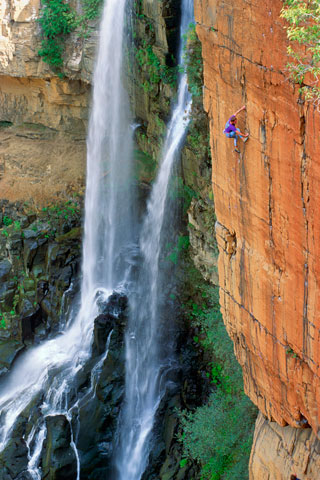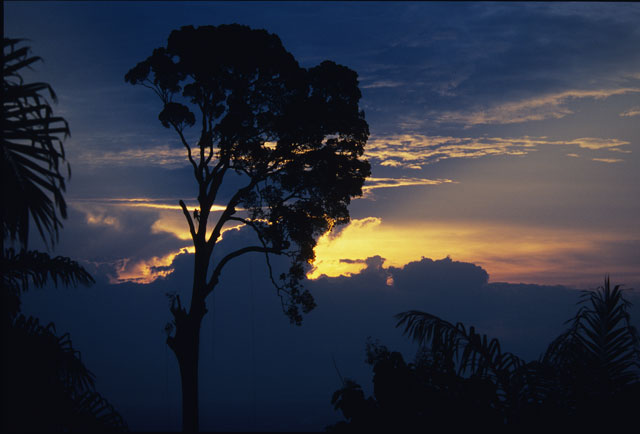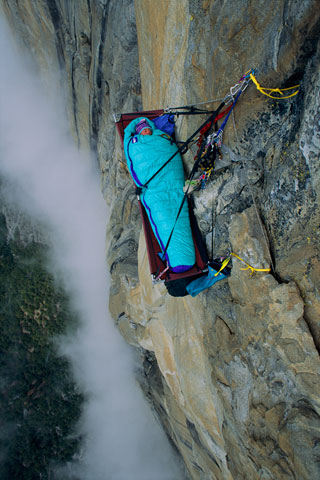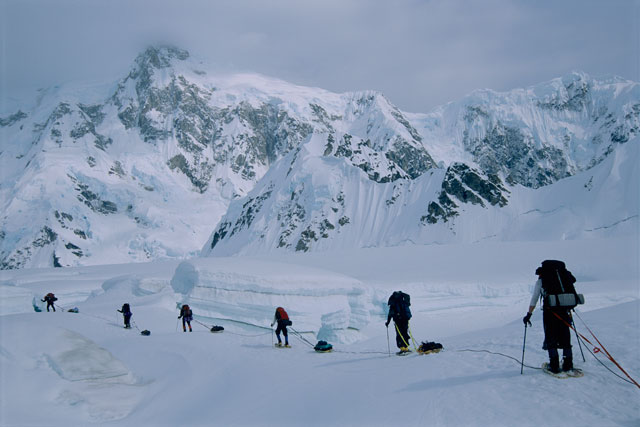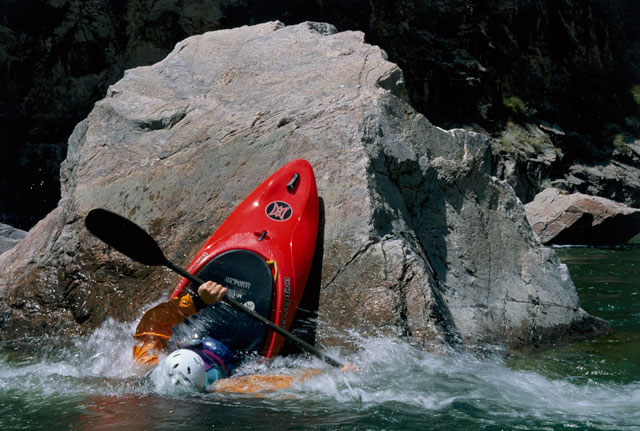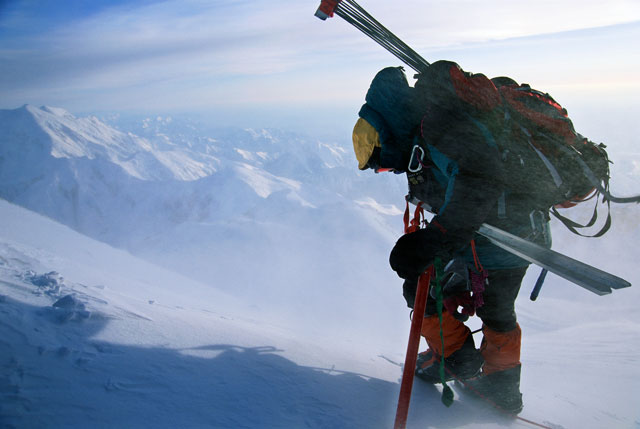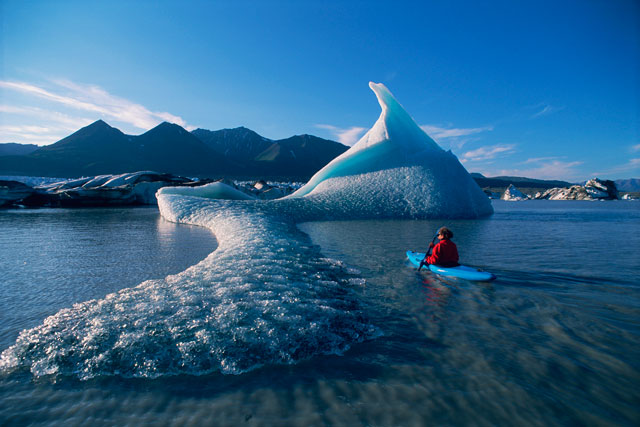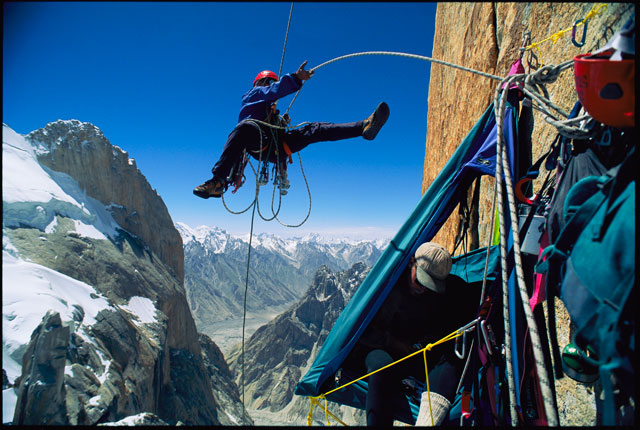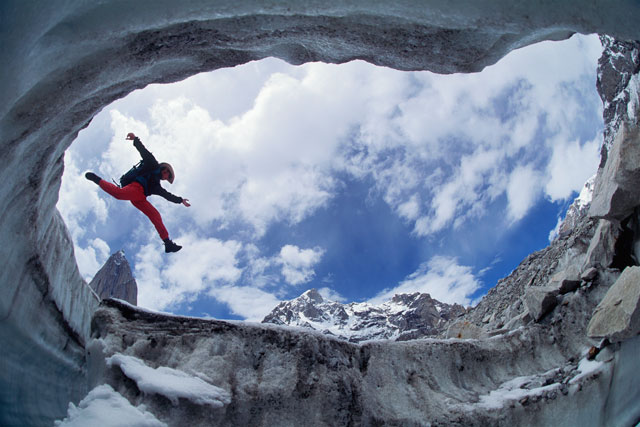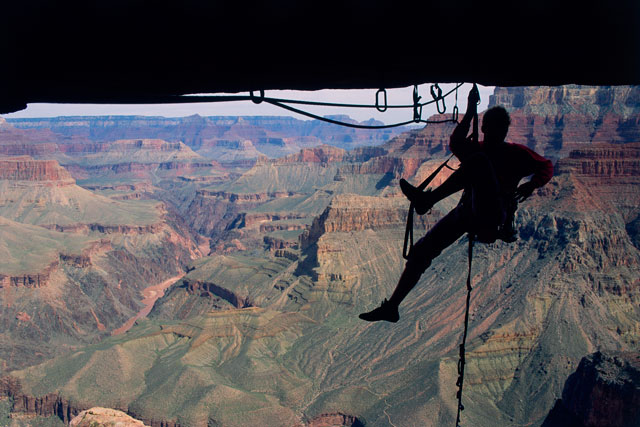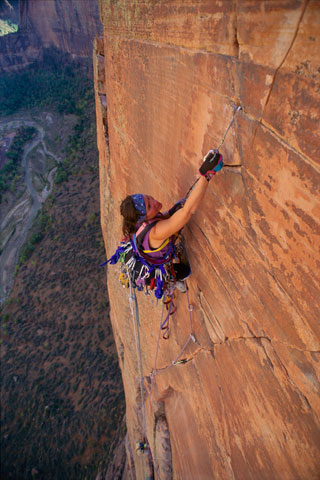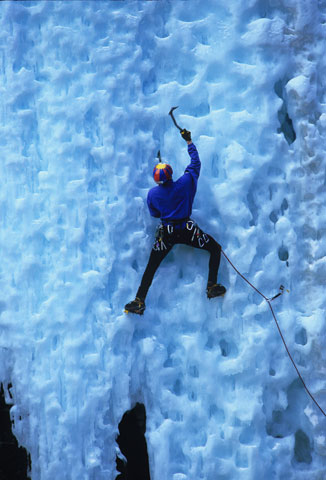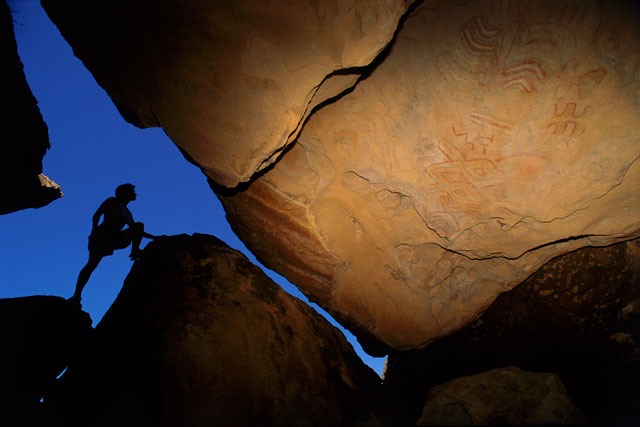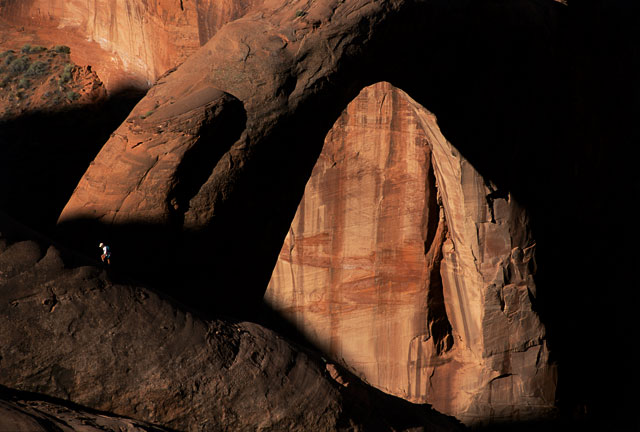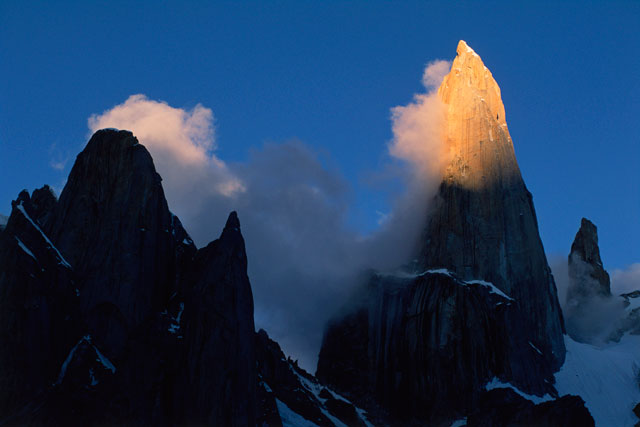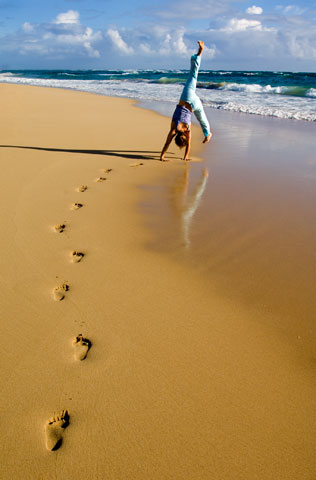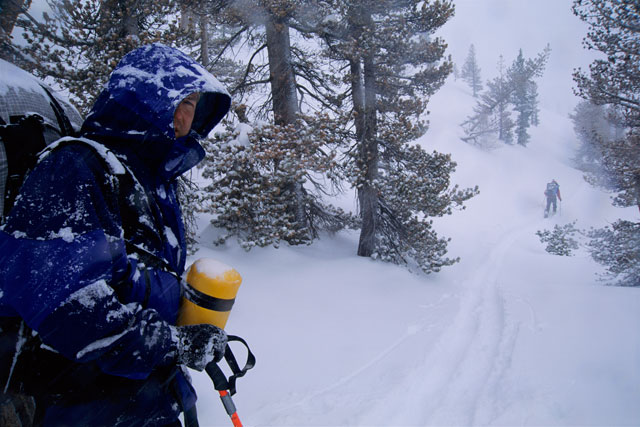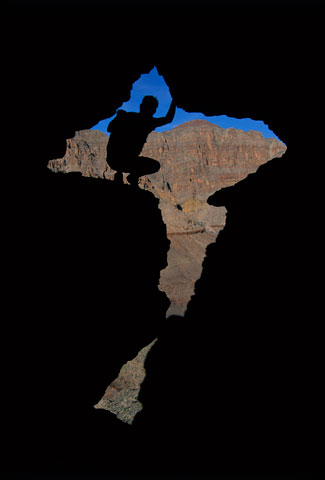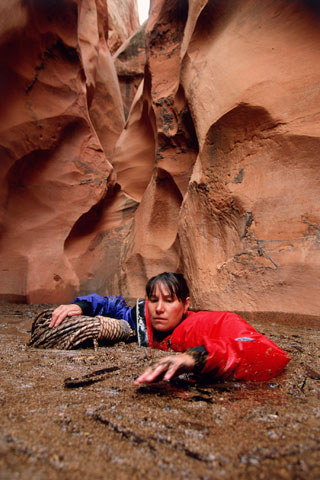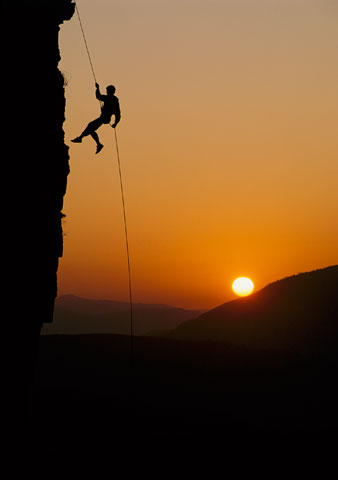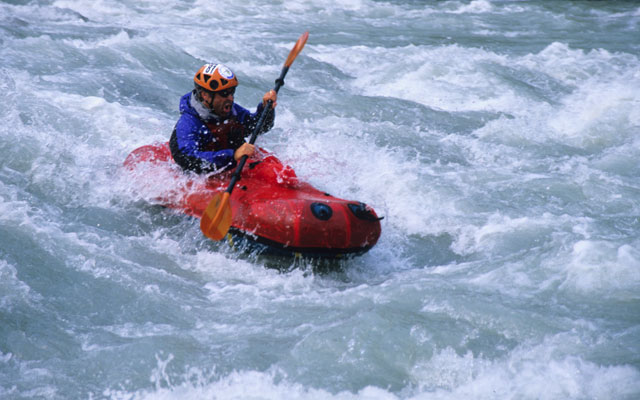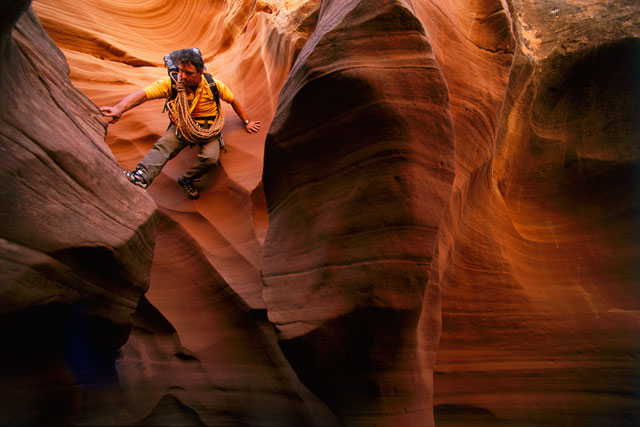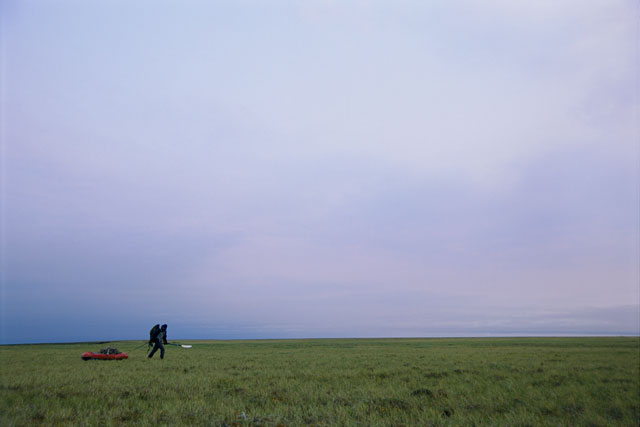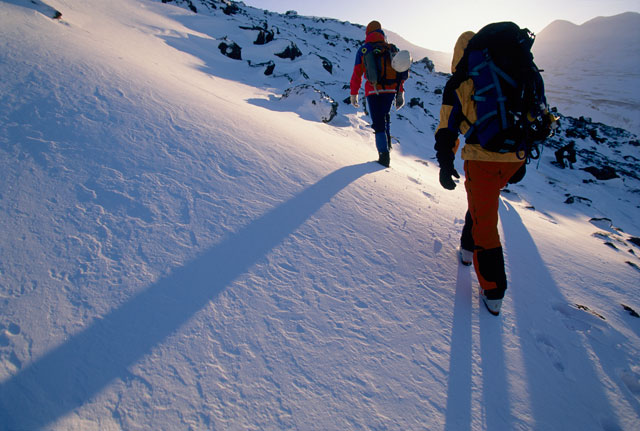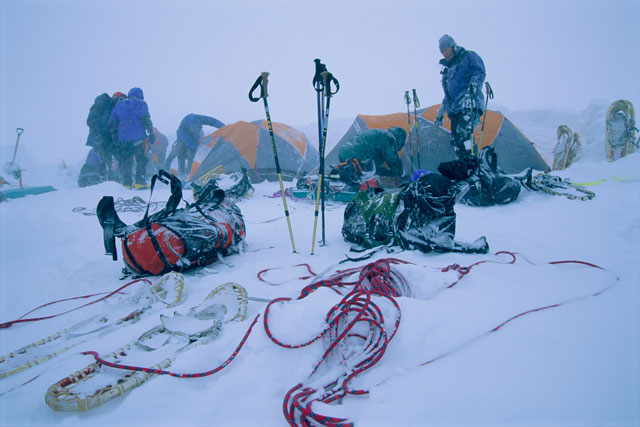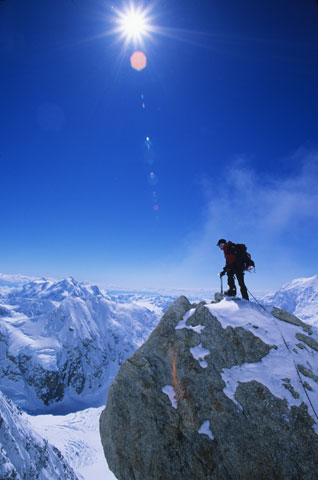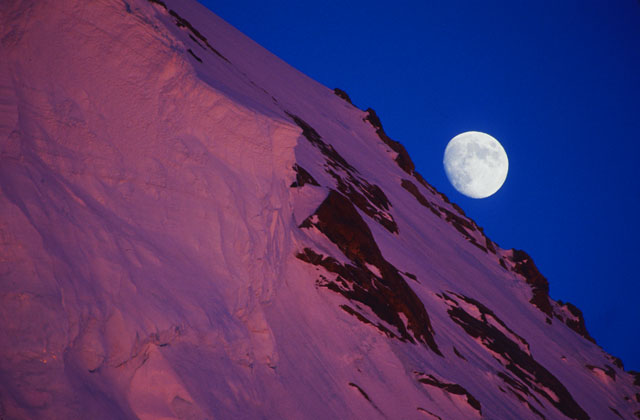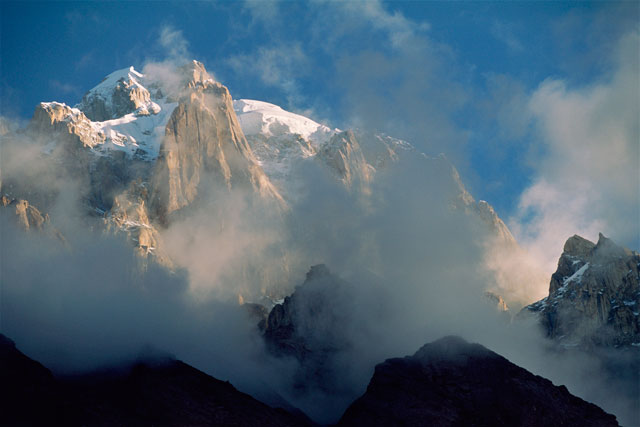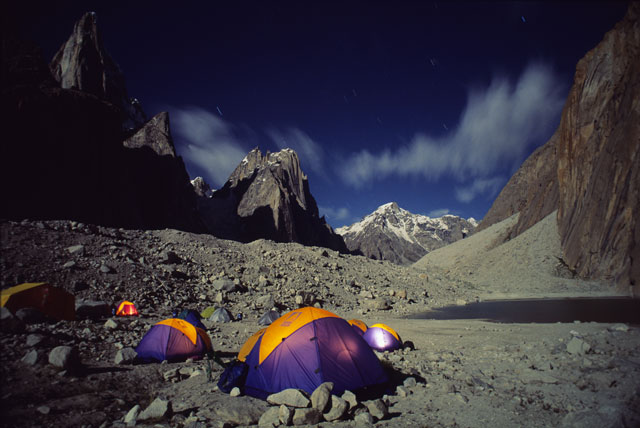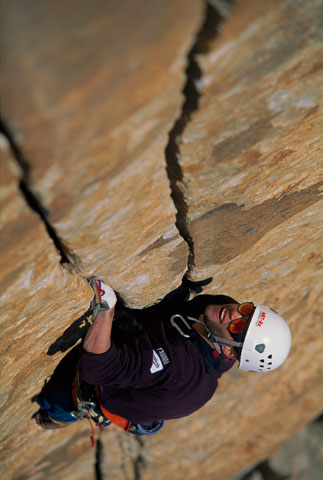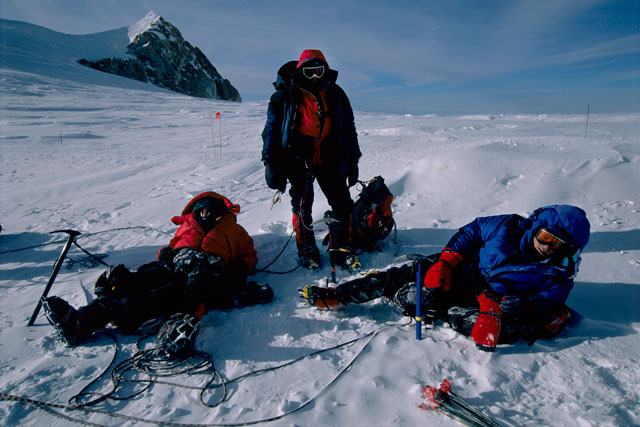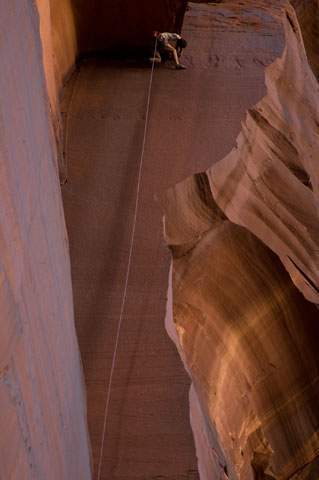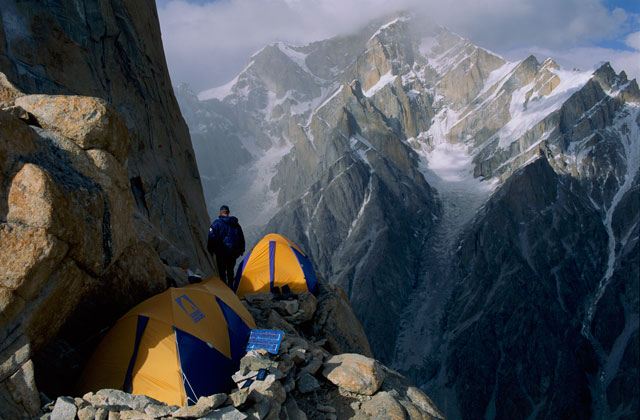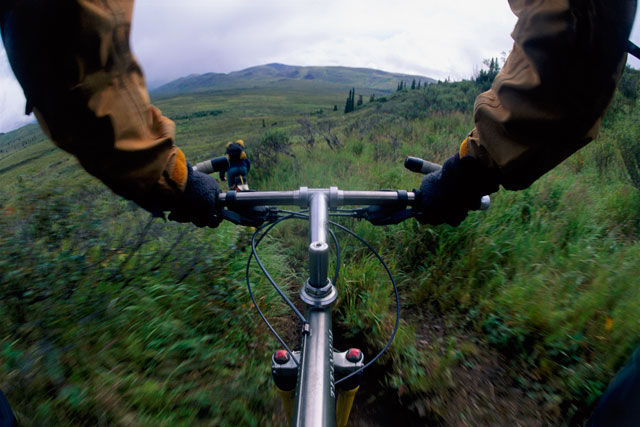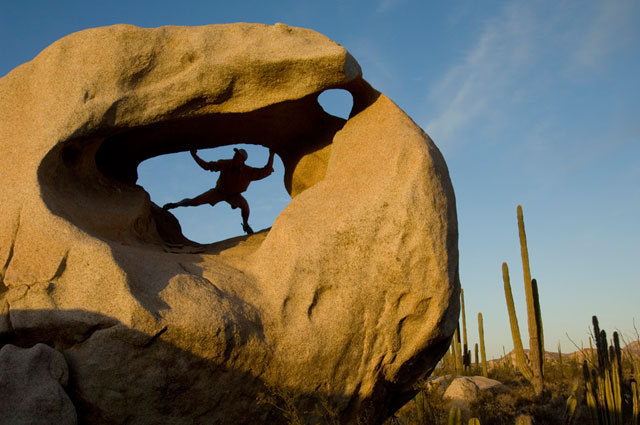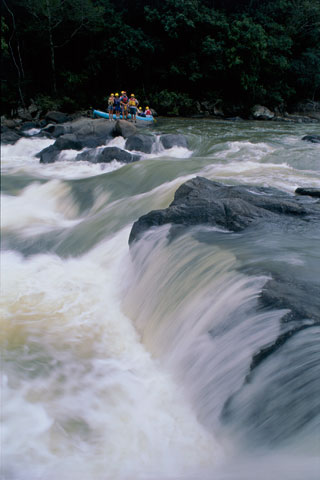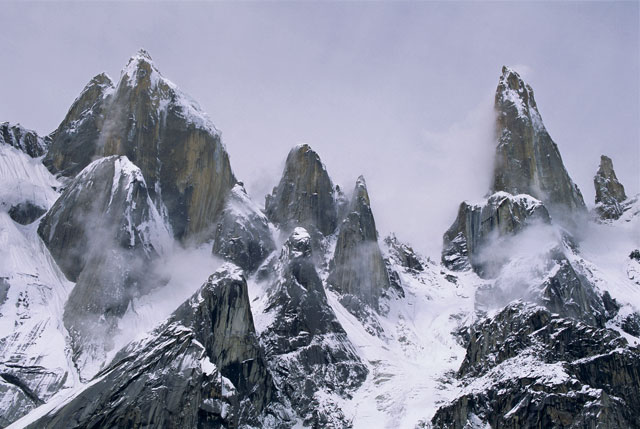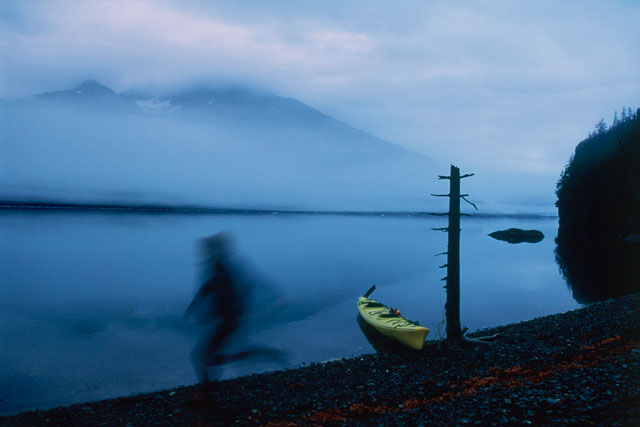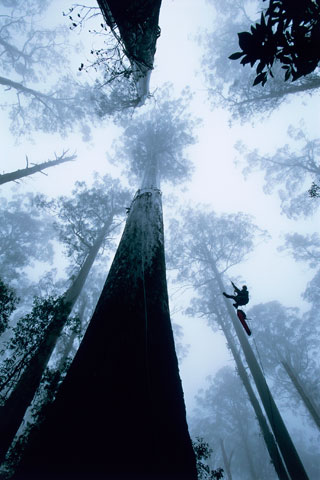Outdoor Pursuit
Bill Hatcher Is a Nikon Legend Behind the Lens
He's out to shake you up. What Bill Hatcher wants is the "Oh, my gosh!" reaction. And he knows exactly how to get it.
"I know as many tricks as any other photographer when it comes to composition," Bill says. "I know how to use converging lines to draw you in, how to use color to elicit an emotional impact, but that's the subliminal part of the image. What I'm trying to do is most efficiently communicate what's going on, and to do that I use the most basic elements in the scene." And so you see scary overhangs and jagged outcroppings, tiny figures isolated in the great, wide open landscape. Scale is everything. Certain reference points are eliminated, others are emphasized. Often, there are no land masses visible, no solid ground seen below; there're only expanses of sky or sheer rock walls. "The climbers could be thousands of feet up in the sky," Bill says. Often they are. You know what lies ahead is at best a long, hard climb. At worst, it's impossible—but they'll do it anyway.
Although Bill frequently photographs for enthusiast publications, he tries always to identify with the non-climber. "I don't want people to look at my photographs and feel that they can be understood only by elite climbers. I want to produce photographs that are dirty, gritty, shaky, even slightly out of focus, that are rough journalistic expressions of the sport or the outdoor pursuit."
When he's on assignment (he's shot for National Geographic, Outside magazine, the Discovery Channel and a host of climbing and sports publications), it's a matter of choosing his spots and his moments. His influence on the activity is minimal. "If you try to choreograph people in the back country or the outdoors, it's extremely disruptive," he says, "but I will tell people on expeditions that we need to slow down, or they should wait up for me." Advertising and commercial shoots are a different story. "I treat those as if I were shooting a feature film: I choreograph every waking moment. But I also have safety teams with me, people whose entire purpose is to oversee safety on those shoots."
Bill's background, like his photography, contains an equal measure of art and adventure. "I was surrounded by art growing up," he says. "My mom's an artist, and I took art and art history classes. They tuned me into what I like. I can view a scene and think, yes, that's what I like—those colors, that composition. It's no accident that I found myself in the southwest [he lives in Dolores, CO]. It has beautiful light, amazing landscapes, huge open areas." And what he likes, he shows us in his photographs. "There are a couple of different levels working together: the location; the implication or depiction of the challenge; the amazing backgrounds and settings; and there's a lot of mystery, too. All of those are, I think, the elements of good photojournalism."
Bill grew up in Europe, and Alpine skiing was his first outdoor activity—"I've been skiing since I was nine or ten years old." It was in college that he realized the camera was a great way to document his travels and climbing adventures. "Photography was a way to express what my trips were all about."
A three-month trip after his freshman year took him and some friends to Turkey. "It was during the Iranian hostage crisis," he says, "and we went to the Iranian border and asked about getting into the country. That's what you do when you're 20—everything is, 'Let's go for it!' We were refused entry, so we backtracked, parked our vehicles and decided to climb Mt. Ararat. We were on a climbing trip, it was a mountain, so we decided to do it. It was illegal, of course, and we knew it, but we figured we'd test the security forces. We put on day packs and set off. About 45 minutes out a detachment of well-armed Turkish soldiers came jogging up behind us. They wanted to know what our intentions were. We told them we were on a day hike, and one guy said, 'You're on the border of Turkey, Iran and Russia. This is not a good place to go hiking.' So we went off to climb Suphan Dag." The trip was pivotal for Bill. "I realized then that photography, journalism, climbing, adventure—that was really what I wanted to do."
Although he'll have a camera with him, he says he still often goes hiking, climbing and kayaking "just for the love of it, or just because there's a place I want to explore or something I want to do."

